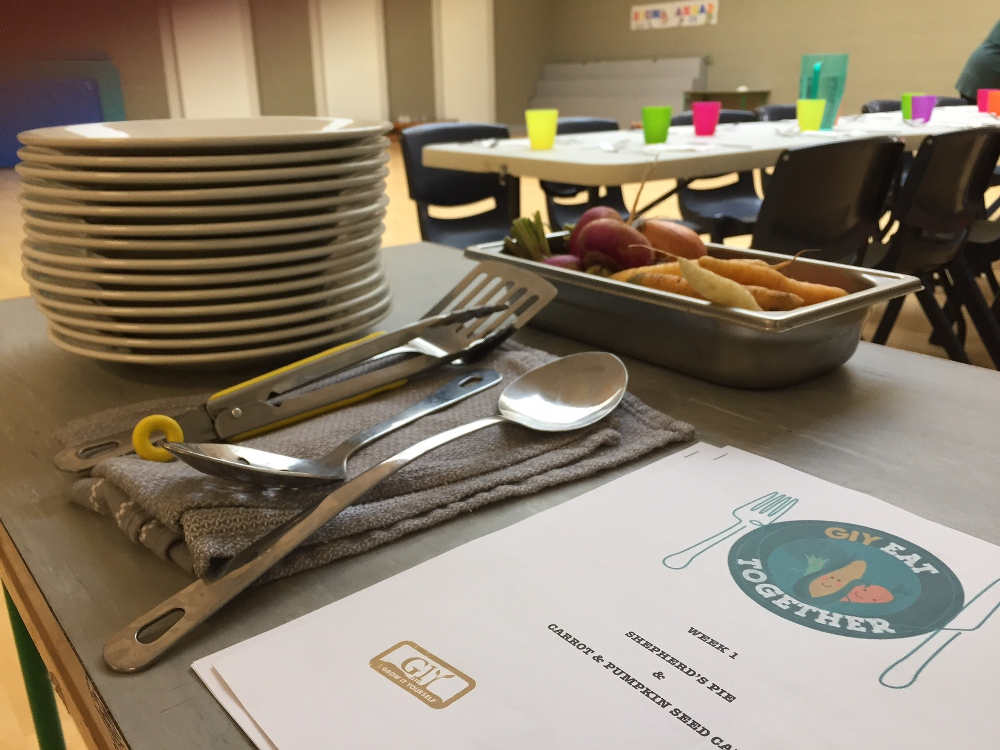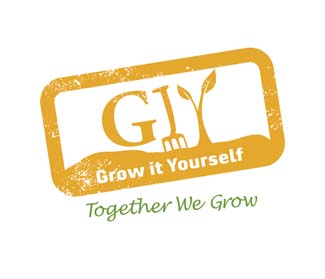Grow It Yourself - March

There’s a great scene from Michael Moore’s 2015 documentary Where to Invade Next that focuses on school dinners. He visits a small rural town in France and goes to the ‘best place to eat in town’ – the local school’s cafeteria. In France, they consider school lunch to be part of the teaching day.
The children spend a full hour where they learn how to eat in a civilized, relaxed manner and enjoy healthy food. In the film, the children dine on scallops to start, chicken or lamb skewers on cous cous for mains, a dessert and even a cheese course (bien sûr!). With such a grounding in social eating, it’s little wonder that the French have such a healthy attitude to and knowledge about food.
Earlier this year, the Chairperson at Tramore Educate Together came across Moore’s documentary. Corinne is French, so it resonated with her, particularly since she now lives in a culture where school lunches are about wolfing down a sandwich in ten minutes before running out to play. She sent it on to my wife, who is principal at the school, and it got us all thinking. Could we hatch a plan to achieve something similar?
The result was a social eating programme called Eat Together, which we’ve now delivered at four schools in Waterford. Since very few primary schools in Ireland have canteen facilities, we had the idea to send the lunches from our restaurant (GROW HQ) instead.
Once a week for a 6 or 8 week period, we deliver to the school a delicious, 2-course hot lunch from a menu plan prepared by our Head Chef JB Dubois. The school agree to schedule it in as a lesson (before the lunch break), and we provide the teacher with a lesson plan to weave it in to the curriculum. The children eat together at long tables to encourage them to talk to each other and, as in the French school, they eat from proper plates/bowls and use real cutlery. We talk about the food they are eating, where it has come from, and how it was produced or grown. They talk about texture and flavour, what veg they can identify in the meal, what they like and what they don’t.
The menu changes every week, but it’s always proper hearty, in-season food. We could have a little veg quiche or tartlet to start, followed by shepherd’s pie or chicken casserole for mains. If dessert is on the menu we generally sneak some veg in there too. A beetroot brownie, or carrot cake.
The children bring the menus home so they can cook it at home with their families if they so wish. Feedback from children, parents and teachers has been overwhelmingly positive – over 90% of parents would like the programme to continue and are willing to pay for it themselves. They tell us it helps to make their children more interested, curious and knowledgeable about food.
We’ve seen even the pickiest eaters become more willing to try things, when they are surrounded by their peers who are getting stuck in. Above all though, it’s a chance for children to view food as a sociable, enjoyable occasion – rather than a quick re-fueling.
A recent Safefood Ireland study found that the total lifetime cost of childhood obesity in Ireland is estimated at €7.2billion (that’s not a typo), so it’s clear that radical thinking on food education is needed.
A programme like Eat Together could be part of the solution, and it’s worth noting that the government is already funding lunch deliveries to DEIS schools to the tune of €48m annually. In the meantime, we’re actively looking for partners to help us roll Eat Together out further around the country. Get in touch if you want to get involved.
The Basics – Sowing Celeriac
Grow celeriac as you would with celery, but because it stores well, there’s no need for succession sowing. A single sowing in late March or early April is all that’s required. Broadcast (sprinkle liberally) the seed in to a pot filled with seed compost. As is the case with celery, celeriac seeds need light to germinate so do not cover the seed with compost. Place the pot somewhere warm (a sunny windowsill or a heating mat) – it’s slow to germinate so don’t expect any action for two to three weeks. Keep the compost moist. Prick the seedlings out in to module trays (one seedling per module) about 2-3 weeks after germination (when about 3cm tall).
GROW HQ Courses in March
The teaching team are busy this March at GROW HQ. Join our horticulture therapist Caitriona Kelly for “Step in to Social and Therapeutic Horticulture” (March 10th); Head Chef JB Dubois for a masterclass on Brunches (March 15th, €25); Michael Kelly for his popular Beginners Guide to Growing Course (March 24th); and Head Grower Richard Mee for a full day course called Spring in the Garden (March 31st). For kids we have our Easter Camp (26th to 29th) and our Junior Cookery Club on March 25th. For more details visit shop.giy.ie.
Things to do this Month - March
To Do
Continue to prepare ground – there is still time to prepare a plot to grow veg this year. Fork or rake over existing beds, breaking up large clods of earth. Cover new seedlings with fleece if a frost is due. Start your daily slug patrols and lay beer traps. Don’t let new-season weeds take over – get on top of them with weekly hoeing.
Sow
Indoors: lettuce, aubergine, peppers, cucumbers, celery, celeriac, sweet corn, basil, leeks, summer cabbage, cauliflower, Brussels sprouts, parsley, courgette, French beans.
Sow outdoors or under cover: broad beans, red cabbage, carrots, cauliflower, spinach, kale, Brussels sprouts, onions, leeks, turnip, peas, radishes, early lettuce, asparagus. Plant your first early seed potatoes, as soon as weather conditions allow.
Harvest
This month you could be enjoying (from the ground and from storage) onions, leeks, parsnips, potatoes, some varieties of lettuce, mint, sprouting broccoli, kale, rhubarb, chard, the first of the spring cauliflowers and cabbage, and spinach (perpetual, spinach beet).
Recipe of the Month – Traditional Shepherds Pie
This recipe from our Head Chef at GROW HQ (JB Dubois) is one of the main courses from the EAT Together pgoramme. In the olden days, meat pies were done with left over stew and not with mince. The reheated stew was then topped with pastry or with mash potato (more traditional in Ireland). The diced lamb gives this a fantastic texture, and it’s full of in-season vegetables – garlic, carrots, parsnips and onions.
Ingredients
• 500g diced lamb
• 4 large tomatoes or 1 small tin of chopped tomatoes
• 2 garlic cloves
• 2 medium carrots
• 1 parsnip
• 1 large onion
• chopped rosemary leaves
• 200 ml good homemade chicken stock (made from the left-over bones of a roast chicken)
• pinch of salt
• 1 Tbsp cooking oil
• 700g nice buttery mash potato to cover the top
Directions
Fry off the diced lamb with a little cooking oil in a wide stock pot for 5 to 6 minutes until golden brown. Peel and slice the vegetables. Add the vegetables to the meat and fry off for 3 to 4 minutes.
Add the chopped garlic, rosemary and salt. Add the chopped tomatoes and the chicken stock and simmer on low heat for 2 to 3 hours until the meat start to become flaky. Pour the lamb stew into a pie dish, cover with mash potato and bake at 150 degrees celsius for 45 minutes.
GROW HQ
Visit the home of the GIY movement, GROW HQ in Waterford for a range of classes and courses on growing and cooking food. Our plot-to-plate café and bistro, just 110 paces from the veg patch, won the Farm to Plate award at the Food & Wine Awards and Local Food Hero at the Irish Restaurant Awards. Open 7 days from 9am to 5pm and serving evening meals from Thursday to Saturday. www.growhq.org.
Become a VIPea
By joining GIY you help us to continue the work of supporting people just like you to grow food at home, at school, in the workplace and in the community – this year we will support over 500,000 people and 9,000 community food growing groups and projects. It costs just €35 to join GIY for a year, and to say thanks we will send you a seasonal copy of our supporter’s magazine GROW and some GIY seeds for you to sow each quarter. It will also entitle you to a 10% discount at GROW HQ and our online shop. Join today at www.GIY.ie.
About GIY

GIY is a not-for-profit organisation that aims to create a healthier, more sustainable world where people grow their own food. We inspire and support people to grow food more successfully by bringing them together to share advice, tips and ideas. There are approximately 65,000 people involved in the GIY movement in Ireland, which is proudly supported by Woodies DIY.
For more information check out www.giyireland.com
Michael Kelly is a freelance journalist, author and founder of GIY Ireland.
© GIY Ireland 2018 – all rights reserved.







There are currently no comments
Leave a comment
Not a member? Register for your free membership now!
Or leave a comment by logging in with: